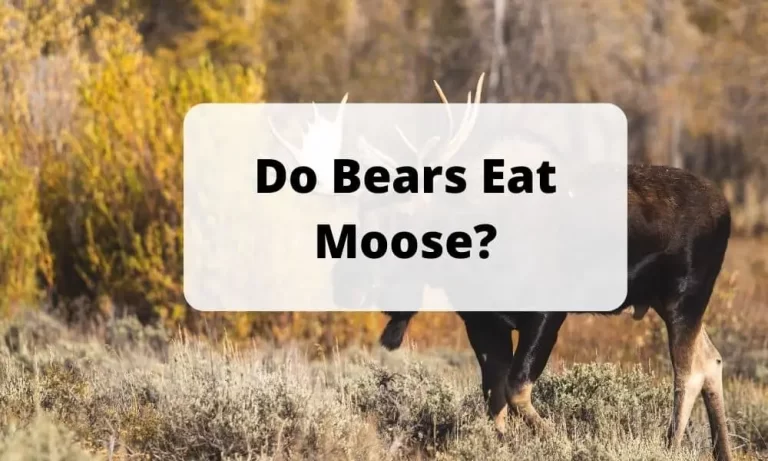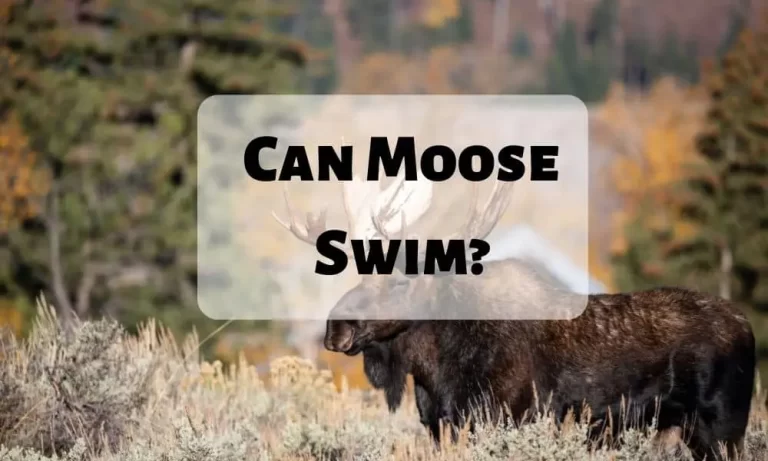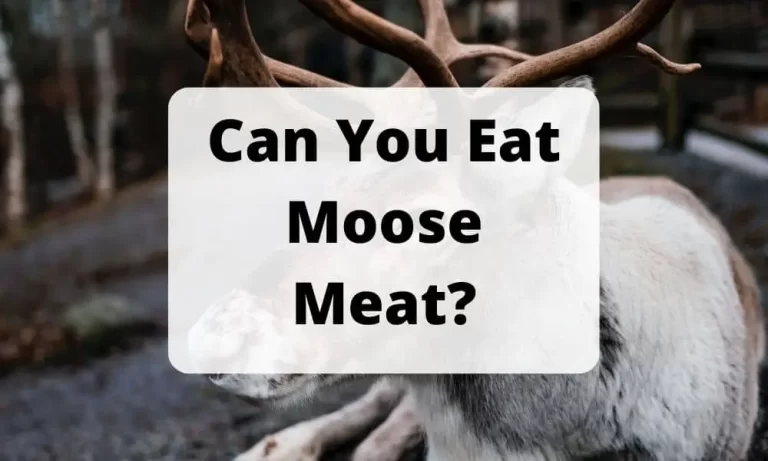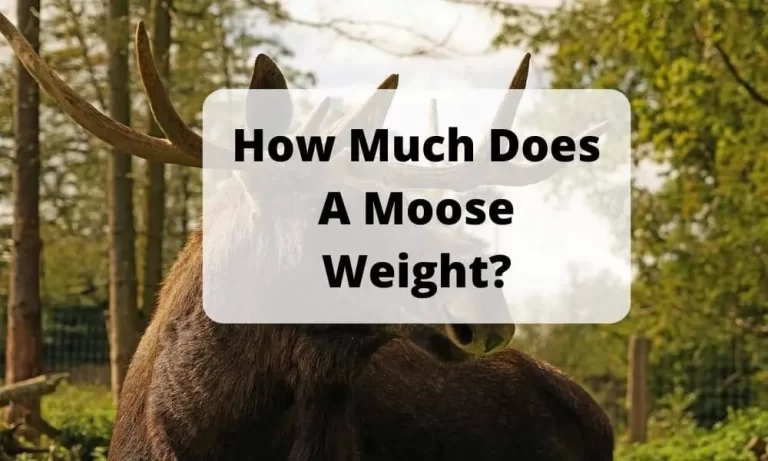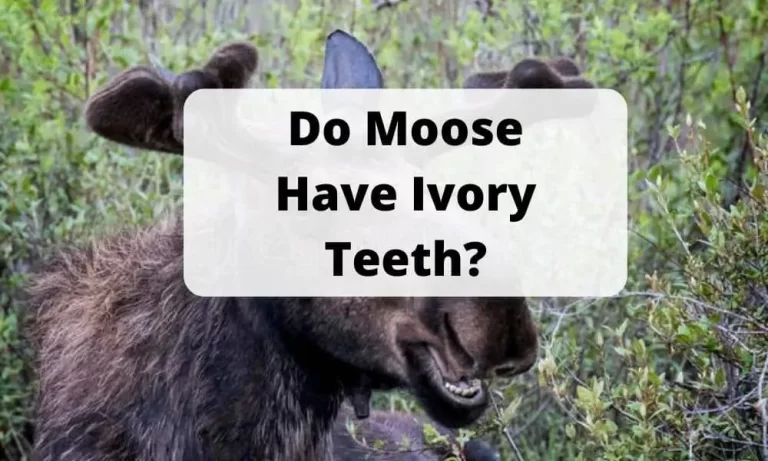Do Female Moose Have Antlers? – Hidden Facts
Moose is one of the largest members of the deer family and resides in North America. These enormous mammals are herbivores and remain calm most of the time. They can store more than a hundred pounds of food in their stomach and can sleep for hours while standing up. [acf field=”Schema”]
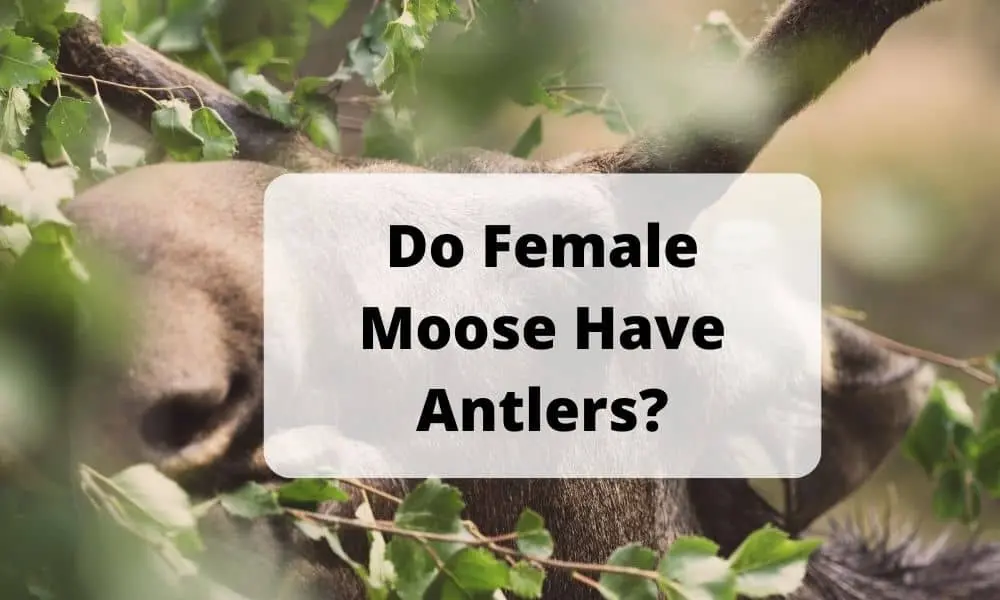
Moose are big animals that have big, heavy antlers on their heads. The antlers can be so heavy that the moose will sometimes shed them and grow new ones. Most of the time when we see moose, they have antlers on their head. But some moose, like the females, don’t have antlers. So this makes people wonder, Do Female Moose Have Antlers?
In this article, we will discuss moose antlers and give you an answer to this question; do these females have antlers or not? So read till the end to know some unknown facts about antlers.
Is It Possible That Female Moose Have Antlers?
Female moose don’t have antlers; they are only present on males’ heads. It might be possible to see a female moose with antlers because of hormone imbalance. Many other body’s internal phenomena can lead to antler formation on their heads, but hormone imbalance mostly leads to this. Their antlers will not be in actual shape and size as due to hormonal changes, their antlers will be deformed.
Moose Antlers Composition
Antlers are a rigid extension of the moose head composed of cartilage, bone, skin, fibrous tissues, blood vessels, and nerves. They are attached to their skulls and have vascular skin known as velvet which provides them oxygen and essential nutrients to grow properly. The tip of the antlers is made of cartilage from where further growth of antlers proceeds, which is later replaced with bone tissues. Once the antler is grown fully, the bony part starts to die gradually, and after some time, its base is destroyed, leading to the shedding of antlers.
Moose Antlers Weight
Moose antlers’ weight changes as they grow continuously, a fully grown antler weighs around 60 pounds. They grow continuously for five months meaning in these five months, their weight increases. The average weight of antlers ranges between 40-45 pounds, but a large moose’ antlers might be more than 75 pounds and six feet wide.
When Do Moose Form Their Antlers?
Moose antlers form in spring and summer because they benefit them in the mating season, which is around December. They get their first set of antlers at one year and grow larger with their age. Antlers are considered one of the fastest-growing tissues of animals. They increase in inches each day and can be entirely grown in five months.
Do Moose Antlers Shed?
Yes, moose shed their antlers; it’s a natural process that doesn’t feel any pain during shedding. In the shedding process, first velvet disappears from the antlers, and then the bone starts dying. Antlers’ base is destroyed by osteoclast that helps them to shed quickly.
Why Do Moose Loose Their Antlers?
Antlers’ production absorbs a lot of energy from the moose body and disturbs the testosterone level. Antlers are mainly composed of calcium, so they absorb calcium from the antlers, due to which they start dying gradually and detached from their skull. They do this to fulfill calcium needs and regulate their body’s testosterone level.
Absorption of calcium improves the testosterone level in the body, which helps them to boost their physical stamina during the mating process.
Do Moose Loose Their Antlers Every Year?
Moose shed antlers each year naturally as they will regrow in the spring or summer season. It is usually done during the mating season to regain some energy, or it might be because of getting rid of this extra weight they are carrying on their head.
What is The Purpose of Antlers?
Antlers help moose in different ways, whether for protection, mating, or something else—they aren’t carrying this massive weight purposelessly. Different functions of moose antlers are as follow;
- Mating
The most essential and beneficial purpose of antlers is during mating seasons. Antlers are used as a power show to attract females toward them or choose their female and then keep other moose away from her. During mating season, males fight with other male moose, so the dominant will choose his female. Usually, moose with bigger antlers win this competition.
Moose with large antlers are considered to be more potent while choosing his mate, and females are usually attracted to them because females’ choosiness also matters. These types of moose also achieve the highest success rate of fertilization.
- Protection
Moose with antlers always fear predators, especially wolves, because they attack the moose that don’t have antlers. The primary purpose of antlers is during mating, but it takes time in shedding because they need them to defend themselves from predators. Mostly elks and moose that don’t have antlers are killed by predators.
- Snow Shoveling
Another purpose of antlers includes snow shoveling so they can find something to eat that is hidden beneath the snow. Moose live in colder areas where snow falling is regular. In winters, mostly, they don’t find much to eat, so they use their antlers to find something hidden under the snow to fill their tummy.
- Hearing
Moose have powerful senses that help them detect what’s going around them. A moose with antlers can hear more efficiently than a moose without antlers. A study has confirmed that antlers help moose in hearing.
Moose usually sleep while standing up because of fear of predators. They can stand up at a place for hours, so sleeping during this is not a big thing. Their antlers help them sense any danger or predator during their sleep.
How Do We Differentiate Between Male and Female Moose?
One of the easiest ways to differentiate between male and female moose is by looking at the sex organs, but it’s dangerous because they can attack if you try to go near.
You can find the female by looking at its head; if the moose have antlers on its head, then it’s the male; otherwise, it’s female. You can also differentiate between them depending on their facial recognition because a female moose have a light-colored face more than a male.
Conclusion
Male moose have antlers, but female moose do not. However, sometimes female moose might have a deformed growth on their head that resembles antlers due to an imbalance in their hormones. Antlers are unique to male moose and are used to attract female moose during the mating season.
Other Related Posts:
